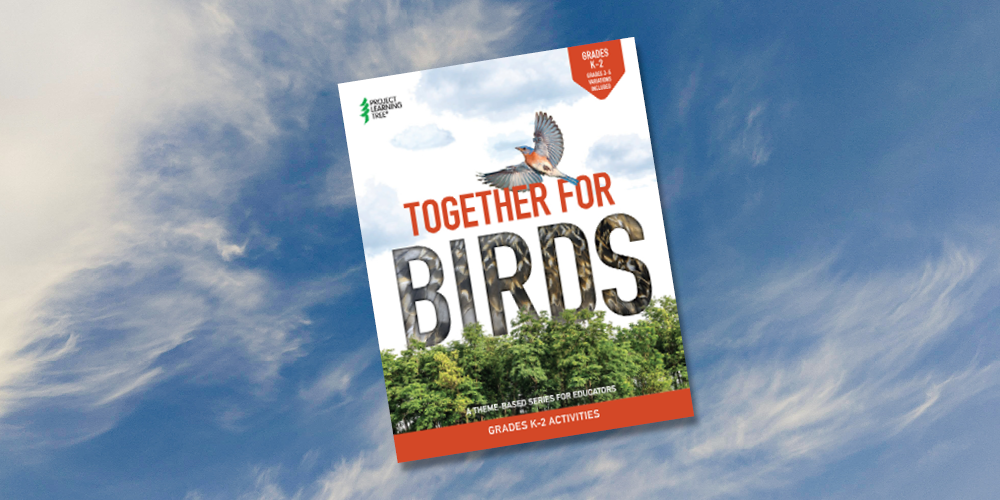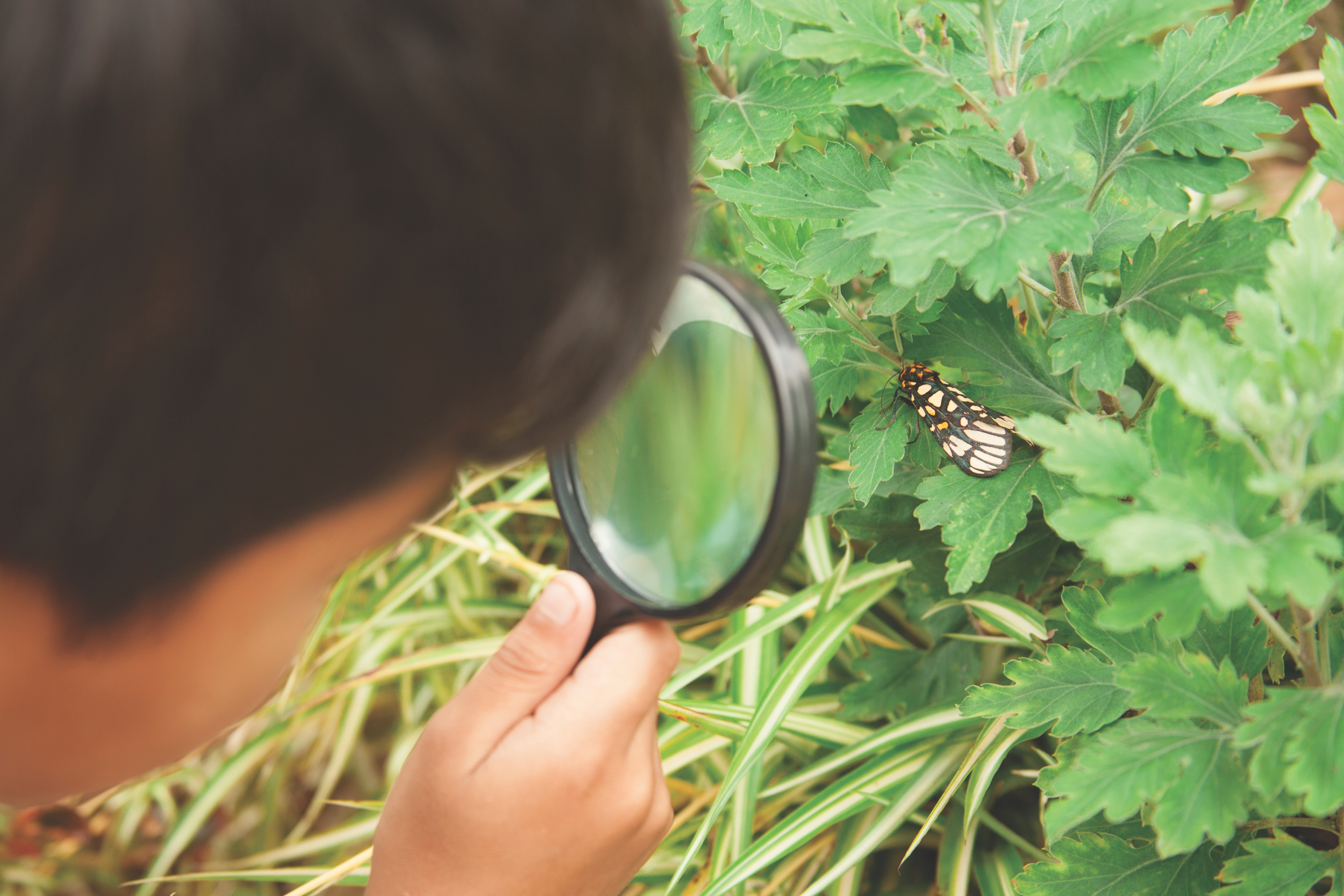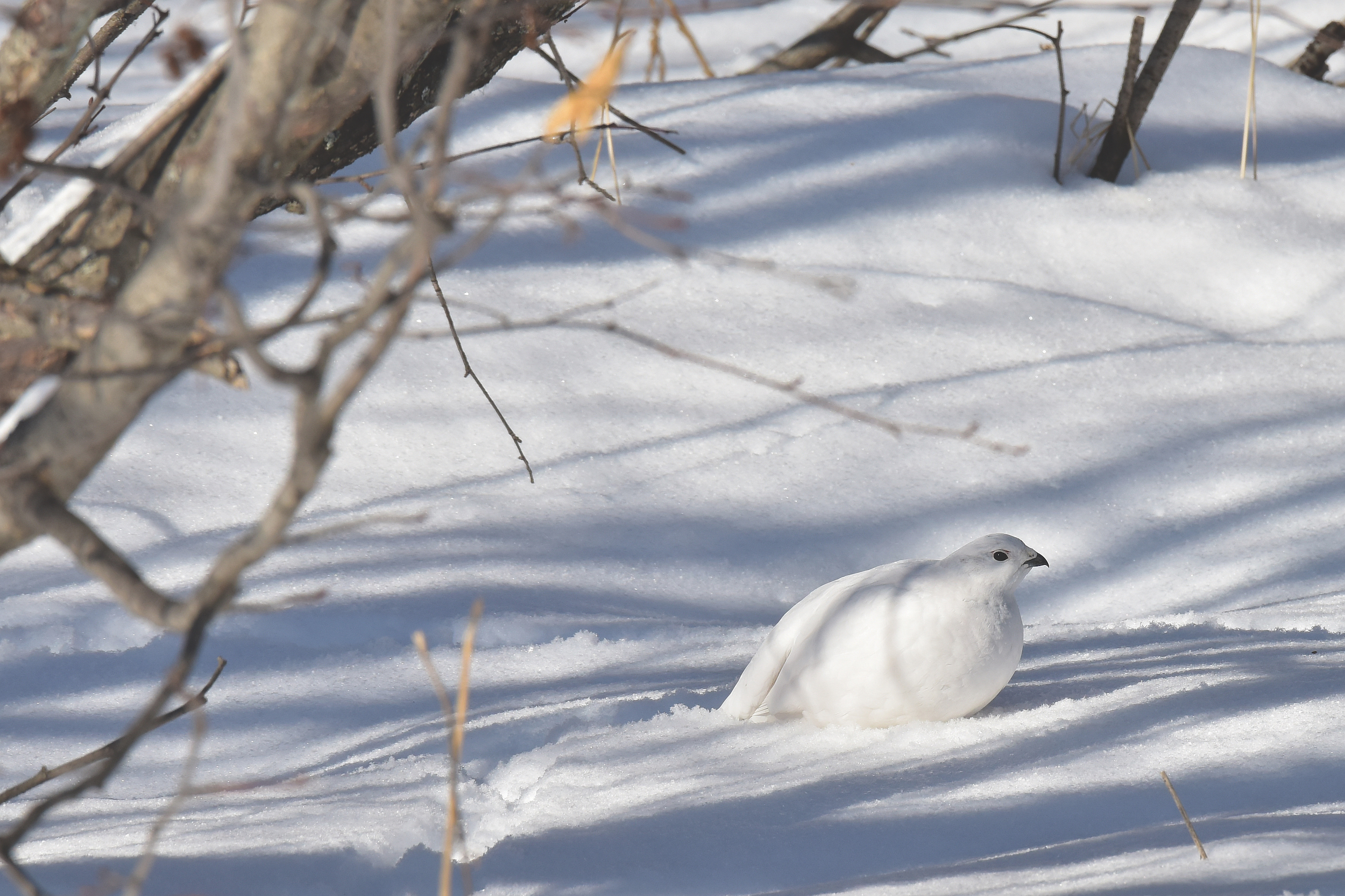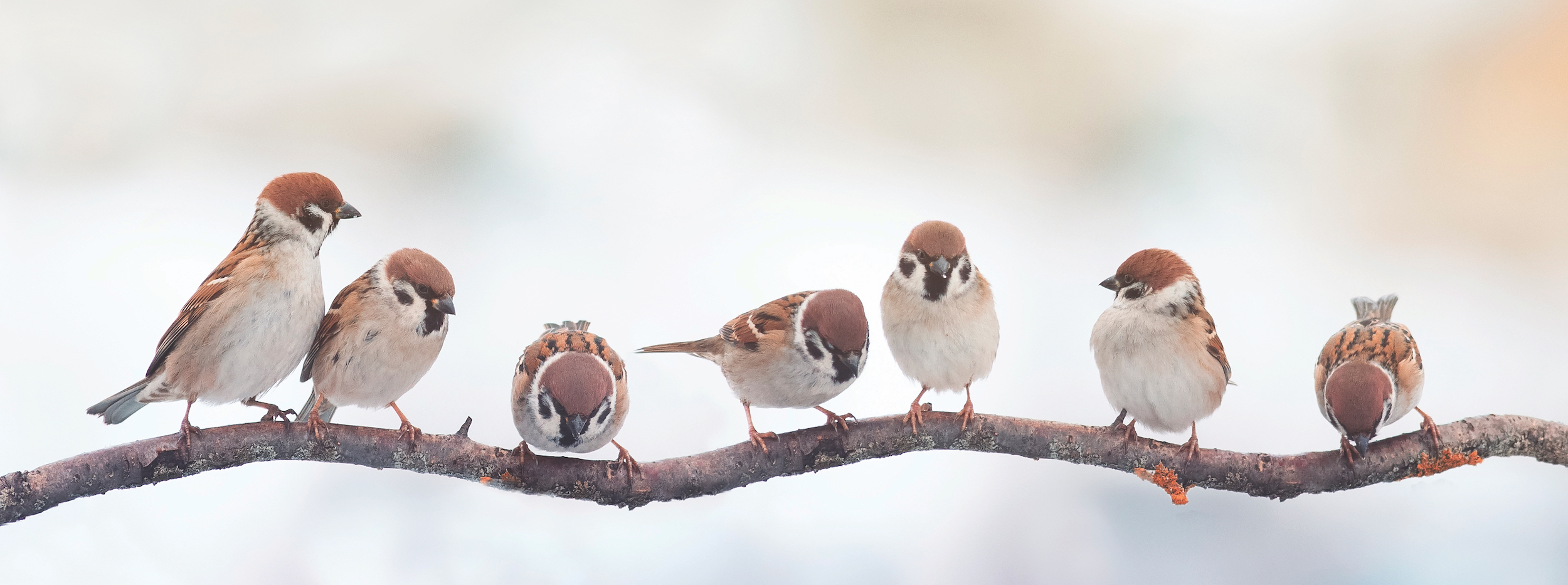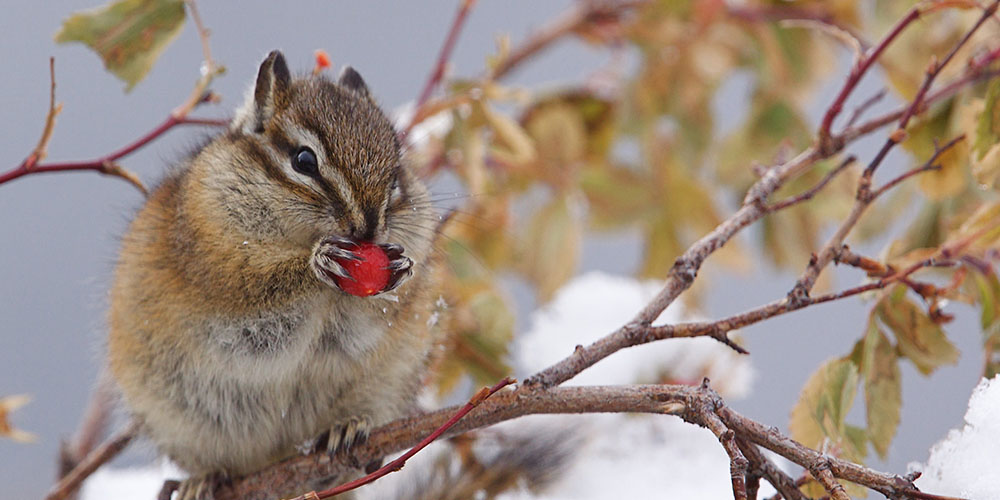Together for Birds
Together for Birds is a downloadable, password protected PDF for educators of students in grades K-2 (with variations for grades 3-5) that invites students to investigate ways that birds and other living things depend on their habitat to live.
Activities:
- Trees as Habitats: Students inventory the birds and other organisms living in, on, or around trees and learn how trees help them get the things they need to live.
- Birds and Bugs: Students discover the value of protective coloration as they model being birds in search of colored bugs.
- Neighborhood Naturalist: Students will explore a nearby habitat – their backyard, schoolyard, or other outdoor setting – to look for signs of animals living there.
Designed to be flexible, the activities can be used as stand-alone lessons, or all together as a cohesive unit of instruction using a storyline technique. The collection includes enhanced bird-specific content such as new enrichment experiences, recommended reading, forest facts, accompanying posters and charts, correlations to the United Nations 17 Sustainable Development Goals, and more.
Furthermore, Together for Birds supports nature journaling and reflection. Explore the Poetic Reflection section at the end of this activity collection for ways to incorporate the creative arts, including poetry and sketching into your bird explorations.
Visit PLT’s website at plt.org/alignment-to-standards for correlations between PLT activities and your state’s academic standards, NGSS, and Common Core, as well as scouts, 4-H, and other nonformal programs.
WHY BIRDS?
Birds are a wonderful introduction to the natural world outside your students’ door. Whether in the city or in a forest, a variety of birds are usually within easy eyeshot or earshot. Observing birds helps to instill an appreciation of wildlife and encourages empathy for all living things. It also supports mental health and overall wellbeing. In addition, it can also help students understand how different components of nature work together to support organisms.
Like all living things, birds need food, water, shelter, and space. We call the place where they get these things their habitat. Through this collection of activities, students will explore the birds and other organisms that live on or around your site. In doing so, they also consider how this habitat provides the food, water, shelter, and space these organisms need to live.
Birds play countless roles in healthy ecosystems—and improve our quality of life. Here are just some of the many reasons birds are important:
- Birds inspire scientific inquiry.
- Birds connect us to nature – including cities.
- Birding activities improve people’s mental and physical health.
- Birds are essential for dispersing native plant seeds.
- Birds teach us about climate and the environment.
- Birds pollinate plants, which is necessary for our survival.
Together for Birds is made possible, in part, through funding from American Bird Conservancy (ABC), which is dedicated to conserving wild birds and their habitats throughout the Americas. With an emphasis on achieving results and working in partnership, ABC takes on the greatest challenges facing birds today. Visit ABC’s Bird Library to explore 400+ species profiles. Learn more at abcbirds.org
About PLT’s Activity Collections
Connecting for Health and Planet is one in a series of PLT activity collections. Other titles in this themed series for educators are Sensational Trees for grades K-2, Biodiversity Blitz for grades 3-5, Connecting for Health and Planet for grades 3-5, Trillion of Trees for grades 3-5, Nature of Fire for grades 6-8 and Discover Your Urban Forest for grades 6-8. PLT’s practical, hands-on activities for teachers and nonformal educators, youth group leaders and home schoolers connect youth to nature and the outdoors. Each activity includes background information, preparation instructions, material and time requirements, step-by-step instructions, and assessment suggestions. Our fun and multi-disciplinary activities appeal to a broad range of learners, including students with diverse learning styles and cultural backgrounds. The activities incorporate STEM, reading, writing, and social studies, and teach students how to think, not what to think about environmental issues for developing students’ critical thinking and problem-solving skills.
PLT Professional Development
Did you know? PLT also offers online, blended, and in-person professional development tailored for specific grade levels, academic standards, environmental topics, and formal and nonformal teaching situations. Consistently rated as one of the best professional development events they have ever experienced, most educators attend a PLT training because they were recommended to it by a colleague. Learn more at www.plt.org/trainings/attend-a-training.
If you are a teacher, librarian, or administrator looking to place an order with a purchase order, please contact PLT’s Sales & Marketing Coordinator at [email protected].
Backyard Naturalist
Every organism needs food, water, shelter, and space. A place that meets all these needs is called a habitat. Students will explore a nearby habitat—their backyard, schoolyard, or other outdoor setting—to look for signs of animals living there.
Birds and Bugs
Camouflage is an essential survival strategy in the natural world. Students discover the value of protective coloration as they pretend to be birds in search of colored bugs.
Trees as Habitats
From their leafy branches to their tangled roots, trees provide habitat for a host of plants and animals. Students will inventory the plants and animals that live in, on, and around trees and discover how plants and animals depend on them.
Login to download supporting materials such as appendices and teaching tips.
Login
 Get this Guide
Get this Guide
 Find Training
Find Training
